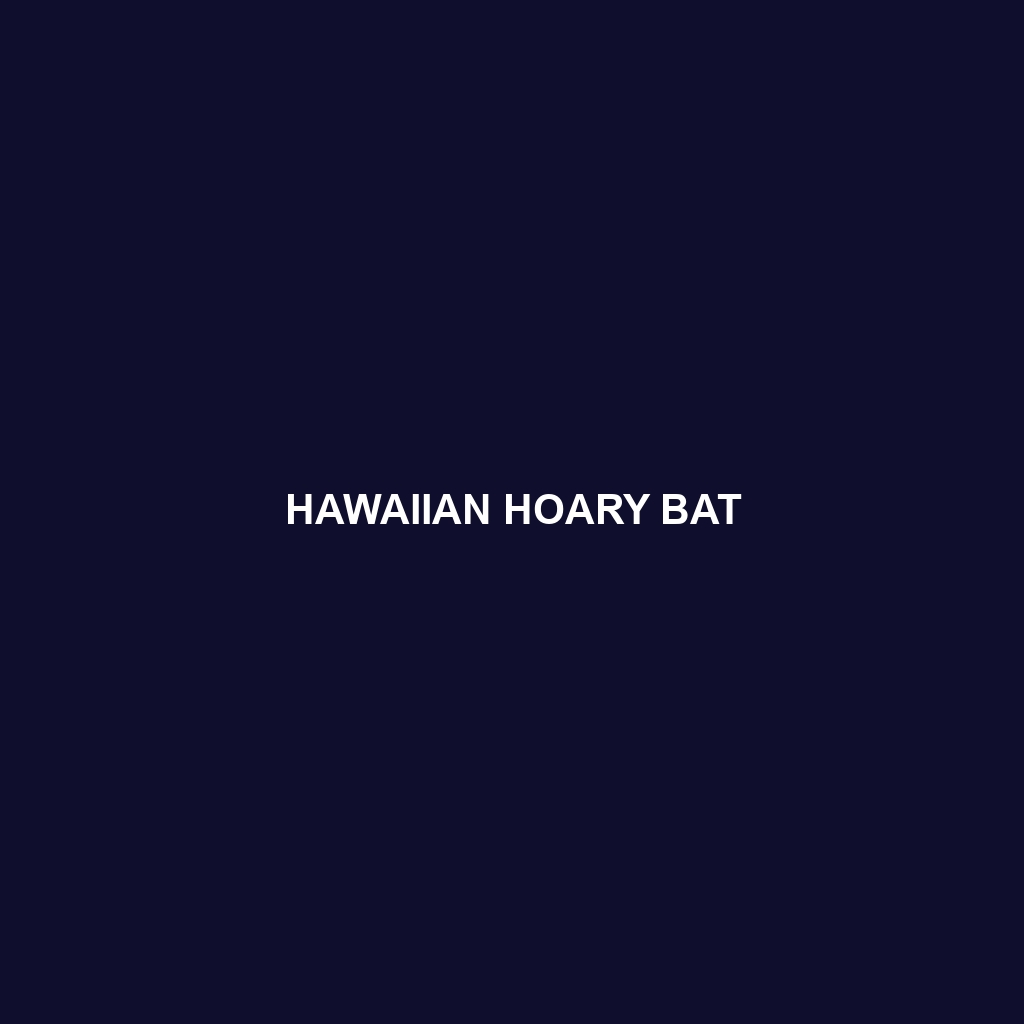Hawaiian Hoary Bat (Lasiurus cinereus)
Common Name: Hawaiian Hoary Bat
Scientific Name: Lasiurus cinereus
Habitat
The Hawaiian Hoary Bat is primarily found in the Hawaiian Islands, particularly on the islands of Hawaii and Maui. This species prefers forested areas, including native Hawaiian forests and plantations, where it can roost in trees and hunt for insects. The bat is also known to inhabit urban areas and agricultural lands, often near water sources, which provide ample food availability.
Physical Characteristics
The Hawaiian Hoary Bat is a medium-sized bat, measuring approximately 10 to 12 inches in wingspan. Its fur is typically dark brown or gray, with a distinctive hoary, frost-like appearance due to the lighter tips of its fur. This species features rounded ears and a relatively short snout, contributing to its unique appearance. The robust body structure of the Hawaiian Hoary Bat allows it to adapt well to its environment.
Behavior
This bat species is primarily nocturnal, exhibiting behaviors such as foraging for insects at dusk and dawn. The Hawaiian Hoary Bat is known for its agility in flight, allowing it to navigate through dense vegetation. They are solitary creatures, often roosting alone in trees or under foliage during the day. Their territorial nature can lead to aggressive interactions, especially during the mating season.
Diet
The diet of the Hawaiian Hoary Bat mainly consists of insects, with a preference for moths, beetles, and other flying arthropods. They use echolocation to locate prey while flying through forested habitats. This feeding behavior highlights their role as natural pest controllers, contributing to the ecological balance within their habitats.
Reproduction
Hawaiian Hoary Bats typically breed in late spring to early summer. Females give birth to a single pup after a gestation period of approximately 40 days. The pups are born hairless and reliant on the mother for sustenance. Maternal care is crucial in the early stages of development, with young bats learning to fly around 3 to 4 weeks of age.
Conservation Status
The Hawaiian Hoary Bat is currently listed as endangered due to habitat loss, predation from introduced species, and threats from climate change. Conservation efforts are underway to protect their habitats and raise awareness about their ecological significance.
Interesting Facts
The Hawaiian Hoary Bat is unique as it is one of the only land mammals native to Hawaii. It is also known for its incredible migratory capabilities, traveling significant distances between its roosting and foraging sites. Its adaptability to various habitats makes it a fascinating subject of study in bat ecology.
Role in Ecosystem
This species plays a vital role in its ecosystem, primarily through its insectivorous diet, helping regulate insect populations. By pollinating native plants and dispersing seeds, the Hawaiian Hoary Bat contributes to the biodiversity and health of its unique Hawaiian habitat. Its decline could significantly impact the ecological balance within these environments.
This HTML-formatted species description emphasizes important keywords and structure that is optimal for search engine visibility while providing comprehensive information about the Hawaiian Hoary Bat.
